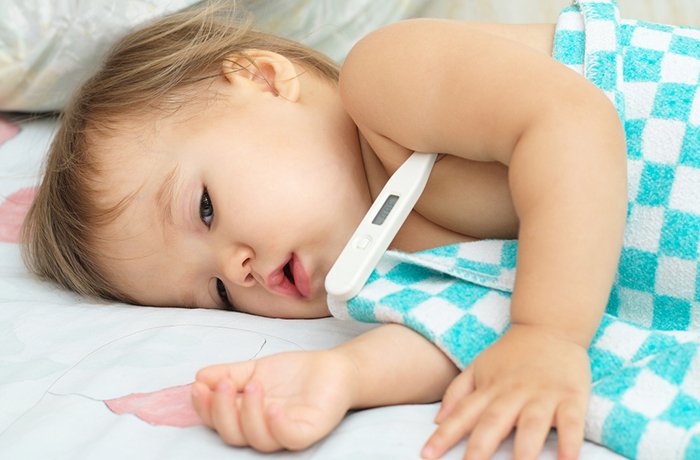
Is a fever a bad thing?
It’s 5pm, you’ve just picked up your toddler from daycare after a crazy busy day at work and rushed home. Your happy little munchkin isn’t her normal bubbly self but you figure she’s just tired (like you!) so you quickly get dinner ready and pop her in her high chair. But by now she just won’t stop crying. So you pick her up for a cuddle and oh no, she’s burning up with a fever! No wonder she’s miserable. Now what? Should you rush her to hospital? Undress her? Give her medicine?
Having a sick child can be stressful and fevers are one of those things that can be hard to deal with. I’m hoping this blog will help to demystify and de-stress things for you.
Firstly I think it’s important to say that a fever in itself isn’t a bad or harmful thing. It’s actually just a sign that the body is fighting an infection. It’s even directly beneficial in helping the immune system fight certain bugs. So don’t worry if your child has a fever especially if they’re still happy and playful. But it is important to know when to worry and what action to take.
What is a fever?
The simple definition is a temperature 38′ celsius or greater. Although I can very technical and talk about core temperatures and how to adjust for different measuring methods, I think it’s easiest to stick with this simple definition. My preferred tool is a digital under the arm or mouth thermometer. The more expensive ear or forehead thermometers are certainly quicker and easier to use but not always as accurate. The forehead sticker thermometers are even less reliable.
When to worry about a fever
So now that we know what a temperature is, when should you worry? Here’s an easy chart as a reference. They’re clues about the possibility of an underlying serious condition. If your child has any of these signs you should seek immediate healthcare advice.

You may have noticed that I haven’t indicated a specific number to worry about eg. a fever of 38.9′ versus a fever of 40′ celscius. This is because the height of the fever doesn’t actually indicate the seriousness of the infection nor does it’s response to antipyretics (medicines like paracetamol that bring down fevers). Although the above ‘alert signs’ can guide you, determining the likelihood of serious infection is most dependent on a thorough clinical assessment of your child. This assessment may include testing to look for infections e.g. urine test, blood test or swabbing the throat or nose. Without any of the above alert signs it’s usually fine to wait a day or two to see a doctor.
It’s important to know that in some children between the ages of 6 months – 6 years a fever can cause a febrile convulsion. If you’d like to know more about this then please leave me a comment below.
When do I suggest to use medicine to bring down a fever (antipyretics)?
I know this can be quite difficult to balance up but my general recommendation is to always treat the child not the fever. This means managing symptoms and withholding medication unless your child really needs it. If they’re miserable and feel unwell by all means give them an antipyretic otherwise try not to. Giving medication is never without risks and possible side effects. Read my next blog on natural ways to manage a fever.
Choice of antipyretics: The options are paracetamol/ acetaminophen (e.g. panadol, panado, tylenol) and ibuprofen (e.g. nurofen, advil). Never use aspirin in children. You should always follow the recommended dosing and there is no evidence that using different medicines together, e.g. panadol and nurofen at the same time, is beneficial. It’s best to stagger them if necessary. And if giving nurofen remember to make sure it’s not on an empty tummy.
Top tips:
- A fever in itself isn’t dangerous
- Most fevers in children are mild and self-limiting
- Treat the child not the fever
- Try simple measures before considering medications
- Be aware of danger signs
- Know when to see a health care provider
If you’ve found this helpful please share it with friends & family 🙂
